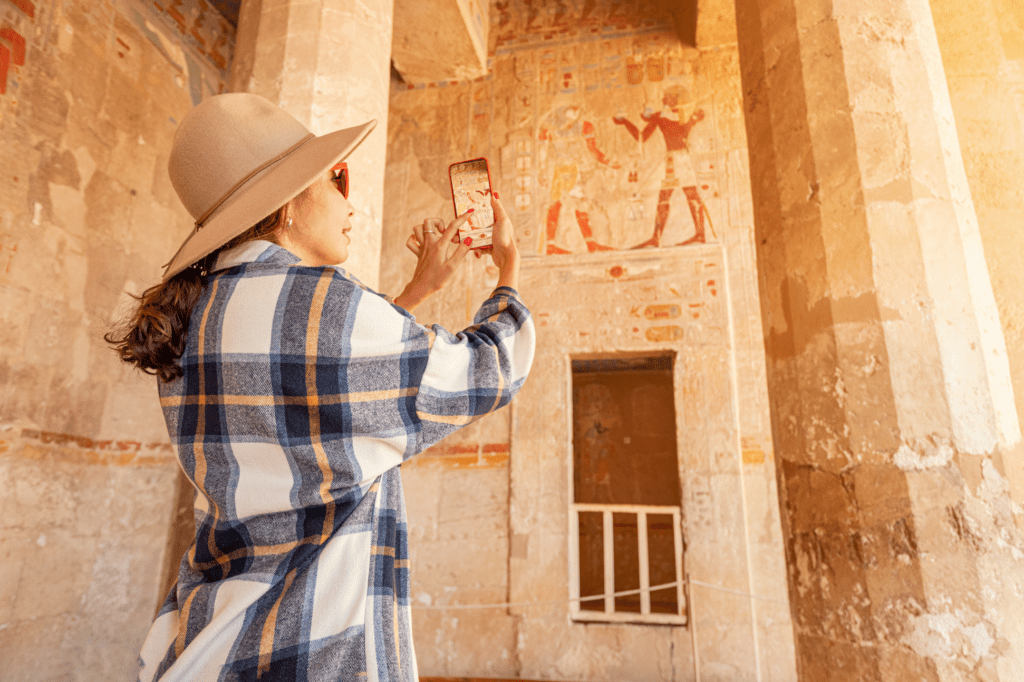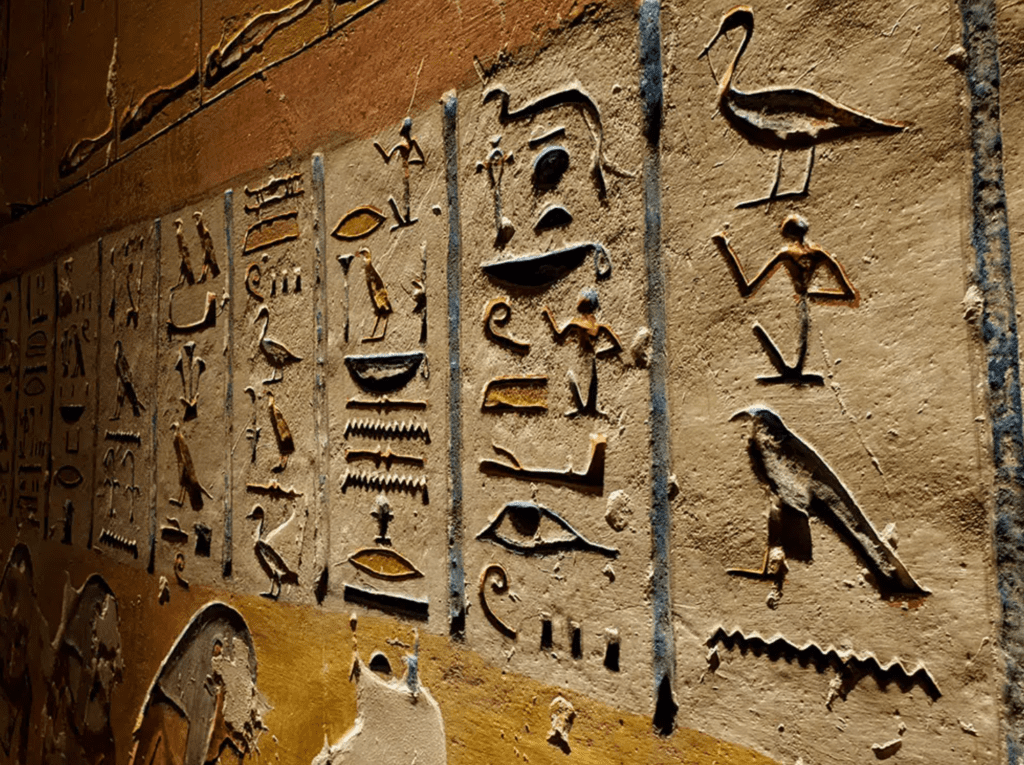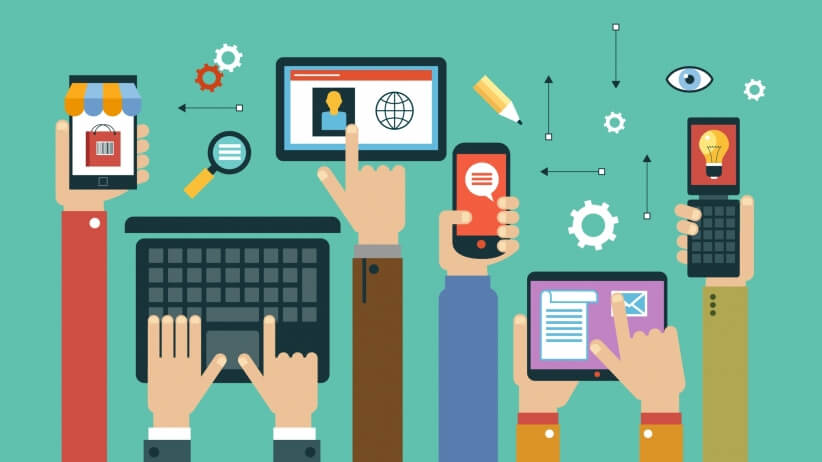
In a world where communication shapes our existence, understanding its evolution is key to navigating the complex web of human interactions. Whether through spoken words, written texts, or virtual chats, the essence of communication remains unchanged – to bridge the gap between minds and foster deeper connections. This article explores the fascinating evolution of how we have expressed our thoughts, ideas, and feelings through communication in history. From ancient cave paintings to the modern digital era, we will examine how communication has changed societies and brought people together, as well as the lessons we can draw for the future. (Estimated reading time: 15 minutes)
“Nothing in life is more important than the ability to communicate effectively.”
– Gerald R. Ford
“Like a grand and miraculous spaceship, our planet has sailed through the universe of time; and for a brief moment we have been among its passengers. But where are we going? And what kind of future will we discover there? Surprisingly, the answers lie in our past.”
The eloquent voice of Judi Dench boomed these words through the speakers of our ‘Time Machine’ as we journeyed on Epcot’s Spaceship Earth in Disney World. The ride transported us back to the dawn of prehistoric humanity, then whisked us through significant milestones in history, including Ancient Egypt, Greece, Rome, the Industrial Revolution, and beyond.
The fifteen-minute journey through Epcot’s enormous geosphere captivates inquisitive visitors who are amazed by the evolution of communication over time. They witness the journey from the invention of the alphabet and the printing press to contemporary innovations such as smartphones and the Internet.
When I was a child, I thought the ride was quite unsettling. There were moments when you were surrounded by complete darkness, and at other times, the animatronics, resembling real people, would stare at you chillingly when you got too close.
However, as I transitioned into adulthood, I began to see it in a new light. The ride’s sweeping take on history made me reflect on our advancements and the significant events that have influenced the contemporary world.
I realized that Spaceship Earth at Epcot isn’t just a ride—it’s a journey through time that connects us to the story of human communication. From ancient cave paintings to the digital age, it explores how we’ve bridged distances and shared ideas. As we move through its iconic geodesic sphere, we’re reminded of the milestones that shaped civilization and the innovators who made it all possible.
But what can this attraction teach us today about communication in history? The answer lies in its timeless message: progress is built on shared understanding, one conversation at a time, inviting us to engage with one another in meaningful ways.
Why study the evolution of communication in history?

Communication binds us. It’s how ideas flow, relationships form, and progress unfolds. From early cave drawings and symbols scratched onto stone to today’s instant global connectivity, the way we interact has reshaped not just how we share information but how we understand one another.
The evolution of communication in history teaches us something profound: each new development not only solves the gaps of its time but also redefines what it means to stay connected. Studying this journey reveals patterns that can guide how we approach communication in the future, balancing tradition and innovation as the world continues to become more interconnected.
Early communication: from gestures to symbols
The story of human communication starts with actions that spoke louder than words. Before the first syllables were ever uttered, our ancestors relied on gestures, facial expressions, and early symbolic drawings etched into cave walls. These simple acts set the foundation for how we connect and teach today. Let’s take a closer look at how this early communication evolved.
Non-verbal communication in history
Imagine needing to warn someone of immediate danger without a single spoken word. For early humans, gestures and facial expressions were survival tools. A pointed finger, a furrowed brow, or an open palm communicated everything from “take shelter” to “this is safe to eat.” These non-verbal signs were critical in building understanding in early communities.
Facial expressions, particularly, were like universal emojis that needed no explanation. A smile signified safety, while a grimace warned of risk. These tools weren’t just practical; they fostered the first layers of social bonding. By watching one another’s body movements and expressions, trust grew. Over time, these silent cues paved the way for something even bigger: shared meaning.
Even in today’s world, body language proves its lasting importance. Think about how much can be conveyed without saying a single word. The roots of this phenomenon trace back to these primitive interactions, where survival depended on reading a gesture correctly.
Cave paintings and petroglyphs
Long before the written word, the walls of caves became prehistoric classrooms. Take the Chauvet Cave in France, for example. Dating back over 30,000 years, its walls are alive with depictions of horses, mammoths, and lions. These images weren’t mere decoration; they told stories and taught survival skills. Imagine gathering your tribe, pointing to a painted bison, and sharing hunting strategies or lessons learned.
Most academic consensus is that paleolithic art is artistic or decorative. It may have held symbolic meaning, like the religious meanings behind chapel frescoes, but just like frescoes, they were artistic rather than functional. While conveyed meaning and therefore communicated in the same way that art conveys meaning now. But that meaning was artistic, religious, or ritualistic, rather than it being a practical teaching tool.
Petroglyphs—symbols carved into stone—provided an even broader method of communication. Found across continents, from the deserts of North America to Australia, these carvings connected communities across time. They might have been maps, codes, or records of traditions handed down like an ancient open-source archive.
These early forms of visual communication combined practicality with a desire to make sense of the world. They captured what was felt, seen, and imagined. By translating experiences into symbols, early humans took storytelling to a whole new level—one that bridges the gap between then and now. Even today, communication in history reminds us that connection doesn’t always need words.
The birth of written and oral language
Written language drastically changed how societies recorded, preserved, and communicated information. What began as simple visual symbols evolved into structured methods of encoding thoughts, ideas, and spoken words. To understand the journey of communication, we need to examine how early pictograms progressed to ideograms, eventually leading to the invention of the alphabet.
The transition from pictures to words
Imagine a time when communication depended on drawing simple images. Early humans used pictograms—visual symbols representing objects or events—as their first attempts at documenting the world around them. These symbols were tools to share knowledge and stories.
In Sumer (modern-day Iraq) around 3100 BCE, clay tablets were impressed with pictograms to track trade and goods. Over time, the Sumerians refined these into cuneiform, one of the earliest structured writing systems. Early pictograms were no longer restricted to representing objects but moved toward expressing abstract concepts. This pivotal shift birthed ideograms, symbols meant to convey ideas.
In Ancient Egypt, ideograms became the backbone of hieroglyphs, where a single symbol could mean an object, a sound, or a concept. They connected people across generations by recording myths, religious rituals, and decrees on everything from stone obelisks to papyrus scrolls.
Hieroglyphics represented a sophisticated mix of pictograms, ideograms, and alphabetic elements, making Ancient Egyptian culture one of the richest in visual storytelling. This evolution allowed societies to capture not just the tangible, like trade records, but also the intangible, like beliefs and emotions.
The invention of writing marked a revolutionary shift in human communication. With the ability to inscribe thoughts, ideas, and stories onto physical surfaces, societies could transcend the limitations of oral tradition.
Written language allowed for the preservation of knowledge across generations, enabling civilizations to document their histories, philosophies, and scientific discoveries. The earliest forms of writing, such as cuneiform and hieroglyphics, allowed people to express complex concepts and engage in more sophisticated discourse.
The invention of the alphabet

While pictograms and ideograms brought a sense of order to early written communication, they were still complex and limited in audience. Then came a breakthrough: the invention of the alphabet.
Around the second millennium BCE, Semitic-speaking peoples in the Sinai Peninsula modified Egyptian hieroglyphics into a system that represented sounds rather than entire objects or ideas. This Proto-Sinaitic script allowed for transcription using a smaller set of symbols.
The Phoenicians later refined this system into an organized alphabet of 22 consonants. As master traders, they spread it throughout the Mediterranean, influencing Greek and Latin scripts. The Greeks made one critical enhancement. They added vowels. This simple yet innovative step created a “true” alphabet, enabling writing to mirror spoken language more faithfully. Gradually, this system snowballed into tools for teaching, commerce, and even storytelling. Its simplicity meant it was easy to learn, eliminating barriers for many.
The impact of this invention stretched farther than anyone could have predicted. Alphabets remained flexible, making them easy to adopt across civilizations. Over time, the Latin alphabet, derived from the Greek and Etruscan scripts, became the foundation of countless written systems, including the one we use today. The simplicity and adaptability of alphabets fueled literacy and unlocked the potential for mass communication. In a way, this ancient innovation mirrors the power of the modern internet: quick, efficient, and built for connection.
The evolution of written communication, from pictures to structured phonetic symbols, set the stage for cultural, social, and intellectual revolutions that still influence our lives. It gave voice to thoughts and stories that would otherwise have faded with time.
Oral tradition and language
The origins of communication in history can be traced back to oral traditions, where storytelling was the primary means of conveying knowledge, culture, and history. For centuries, societies relied on verbal exchanges to pass down their experiences, beliefs, and customs.
This rich tapestry of spoken language fostered a sense of community and identity, allowing people to connect on deeper levels. Oral tradition was not merely a means of sharing stories; it was a vital tool for education, moral teaching, and the preservation of collective memory.
Language itself emerged as humans developed the ability to articulate thoughts and emotions. The transition from primal vocalizations to structured language allowed for the communication of more complex ideas.
This evolution marked a significant milestone in human development, enabling individuals to collaborate, make decisions, and solve problems together. The nuances of language, including tone, pitch, and rhythm, added layers to communication, infusing interactions with emotional depth and cultural significance.
As societies grew and diversified, so did their languages. Different groups developed unique dialects and vocabularies, reflecting their distinct environments, experiences, and worldviews. This linguistic diversity enriched human communication, showcasing the incredible adaptability of language as a tool for connection.
Oral traditions laid the groundwork for written language and broader communicative forms, ultimately leading to the complex systems we use today. The legacy of oral communication continues to resonate, reminding us that the essence of conversation is rooted in shared understanding and the human experience.
Technological revolutions in communication
Communication has evolved alongside humanity’s greatest technological breakthroughs, changing how we connect, share, and learn. It’s fascinating to consider how each groundbreaking invention transformed society, from expanding knowledge to shrinking the world in ways previously unimaginable. Let’s explore two pivotal moments: the printing press and the birth of electronic communication.
The printing press: a catalyst for change
Before the printing press, sharing knowledge was slow, labor-intensive, and limited to a privileged few. Imagine a world where handwritten manuscripts were the only way to preserve ideas. This changed dramatically in the mid-15th century when Johannes Gutenberg introduced the movable-type printing press.
What made this invention so revolutionary? It wasn’t just a tool—it was a match that ignited widespread intellectual and cultural transformation.
By making books faster to produce and more affordable, the printing press democratized access to knowledge. Suddenly, ideas could travel far beyond local communities. It became easier for people to engage with information, whether through the Bible, scientific discoveries, or philosophical essays. Literacy rates climbed as printed material became accessible to a broader audience.
Movements like the Renaissance surged, fueled by this newfound accessibility to thought and innovation. Think of it as a snowball effect: as more people gained access to knowledge, more ideas emerged, propelling discoveries in art, science, and culture. The press wasn’t just a tool for communication; it altered how we learned, challenged norms, and redefined progress. Unsurprisingly, the printing press is often called one of the most important inventions in human history.
From wires to wireless: telegraph and telephone
Fast forward a few centuries, and we arrive at another watershed moment in communication: the advent of the telegraph and, later, the telephone. These two inventions bridged distances, making the world feel smaller and more connected, providing a watershed moment for communication in history.
The telegraph, introduced in the 1830s and 1840s, replaced traveling messengers with electric pulses. Messages that once took weeks to deliver could now arrive in minutes. Samuel Morse’s development of Morse code streamlined communication into a universal system of dots and dashes. Businesses thrived on the speed of information exchange, but the telegraph did more than boost commerce; it connected families, aided military operations, and set the stage for a global news network.
Then came the telephone, forever altering how we interact. Invented in the 19th century, Alexander Graham Bell’s patent quickly brought this innovation to the masses. For the first time, people could hear each other’s voices without being in the same room. Conversations weren’t limited by geography anymore.
These technologies shaped not just personal communication but also society itself. The telegraph and telephone broke down barriers of isolation, allowing communities to collaborate as never before. They paved the way for future innovation, leading directly to the digital tools we rely on today.
Digital era: communication in hyper-speed

We live in an age where communication can happen at lightning speed, breaking barriers of distance and time like never before. Technology has revolutionized how we connect and redefined what connection means. Whether through a computer screen or with a device in our pocket, our ability to share thoughts, ideas, and emotions happens faster and more seamlessly than any other form of communication in history.
Here’s how the internet and smartphones have shaped today’s hyper-speed communication.
The internet: a borderless medium
The internet shattered the boundaries of geography, turning the world into a global village. Think about how email, social media, and instant messaging completely changed personal and professional interactions. Before these tools, we were limited by the constraints of phone lines, postal services, and physical meetings. Now, a thought can travel across continents in less than a second.
Email removed the “lag time” of traditional mail, transforming how businesses operated. Contracts, negotiations, and life-changing opportunities no longer had to wait. Social media went even further by giving everyone a platform from which to speak and be heard. Platforms like Facebook, Instagram, and X (formerly Twitter) didn’t just connect friends and family. They built communities, sparked movements, and gave people the power to reach millions at the click of a button.
Instant messaging apps like WhatsApp, Telegram, and Slack dissolved the gap between real-time conversation and written text. We’ve gone from waiting days for a response to expecting it in seconds. This level of immediacy isn’t just about convenience; it’s about creating a new level of intimacy and collaboration.
The internet has become, quite literally, the infrastructure for global communication. It democratizes access, enabling innovation and fostering relationships across languages, cultures, and purposes. The borderless nature of this medium emphasizes a key lesson: communication connects us when it has no walls.
The smartphone phenomenon
If the internet paved the way for borderless communication, smartphones put that power into our hands, 24/7. These devices combined calling, messaging, emailing, browsing, and even video conferencing into pocket-sized technology. It’s almost hard to remember a time when we couldn’t check emails mid-commute, ping a friend across the globe in seconds, or stream live video from a phone.
Smartphones didn’t just offer convenience. They redefined accessibility as equalizers. With a smartphone, a farmer in a rural village can sell products online, students can learn from distant educators, and families separated by vast oceans can stay connected daily. This leveling effect has made smartphones indispensable.
The innovation didn’t stop at merging communication channels. Through intuitive interfaces, assistive technology, and voice interaction tools like Siri or Google Assistant, smartphones have made communication accessible even for users with physical or cognitive barriers. In essence, smartphones became our modern “Swiss Army knife” for connection.
This always-on connectivity sometimes has its drawbacks, with screen time concerns, mental health challenges, and the need for digital detoxes. Still, for all the criticism, their role in revolutionizing communication in history is undeniable. The smartphone took what the internet started and embedded it into every aspect of our lives.
In this hyper-speed digital era, we’re not just talking faster but freer and farther than ever imagined. The internet laid the groundwork, but smartphones put us into overdrive. The challenge now is figuring out how to retain meaningful connections in a world that constantly demands our attention.
Lessons from history for modern communication
Communication has always been about more than just exchanging information. It’s about understanding, connecting, and building bridges between people. Studying the evolution of communication in history offers valuable insights for navigating contemporary interactions.
1. Adaptability.
Just as language has evolved to meet the needs of different societies, modern communicators must be willing to embrace change and explore new platforms and mediums. The ability to move fluidly between different forms of communication, whether verbal, written, or digital, will be essential in fostering meaningful connections in an increasingly complex world.
2. Empathy in communication.
Empathy cannot be overstated. Historical shifts in communication have often been driven by the desire to understand and connect with others. Listening actively and engaging with diverse perspectives is crucial in today’s fast-paced environment. Cultivating empathy allows for more effective communication and fosters an environment where individuals feel valued and understood.
3. The power of dialogue.
Conversations have sparked revolutions, challenged norms, and led to social change throughout history. Encouraging open and honest dialogue in our communities can help bridge divides and foster collaboration. By acknowledging the rich tapestry of communication throughout history, we can approach modern interactions with a deeper appreciation for the connections that bind us together.
4. Fostering inclusion and accessibility.
Inclusion in communication isn’t a luxury. It’s a necessity. Humans have always sought ways to bring everyone into the conversation. From the invention of sign language to text-to-speech generators, the evolution of communication technologies has continuously worked to amplify diverse voices.
Accessibility isn’t just a checklist. It’s a mindset. As we build future communication tools, we should ask: Have we made room for everyone? Is there a barrier we’ve overlooked? By fostering inclusion, we aren’t just creating better products but shaping fairer societies.
5. The ethical side of communication technology.
Progress often brings challenges. Technology connects us in ways once unimaginable, but it also opens the door to new concerns about privacy and boundaries. The line between connectivity and intrusion has grown thinner.
Smart devices help us stay informed and gather vast amounts of personal data. Another pressing issue is the ethical use of algorithms to direct communication. Today, many platforms rely on algorithms to prioritize content.
Moving forward, we must treat ethics as the backbone of technological development. That means using transparent data practices with privacy and accountability at the forefront. Our choices today will define whether future communication tools empower or exploit. Let’s ensure our drive for innovation doesn’t sideline moral responsibility.
The journey of communication in history is far from over, and as technology continues to evolve, so too will our methods of connection. Embracing the endless conversation is not just about adapting to change but about remaining committed to the core values that define us as a species. Together, we can navigate the future of communication, ensuring that it continues to be a tool for connection, understanding, and growth.
All my best on your journey,
Seline

Questions for you: Which technological feat in communications fascinates you the most and why? How do you use the gift of communication in your life?
Did you like this post? Sign up below, and I’ll send you more awesome posts like this every week.

Have Your Say